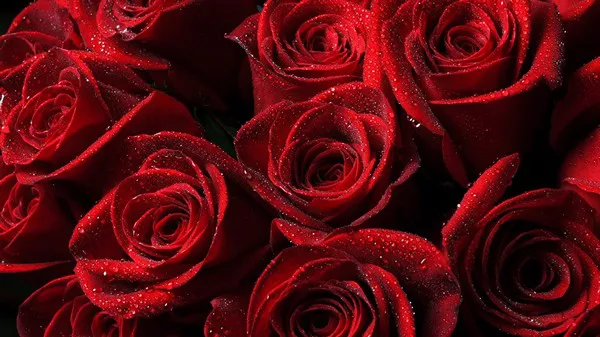Bees play a crucial role in pollinating plants, including many crops that are essential for human food production. Providing bees with a rich variety of flowers, especially during the summer months, helps ensure their health and survival. Here are the top 10 best summer flowers for bees, which can enhance your garden while supporting these vital pollinators.
Top 10 Best Summer Flowers for Bees
1. Lavender (Lavandula)
Characteristics and Appeal
Lavender is a highly attractive plant for bees due to its strong fragrance and abundant nectar. Its purple flowers bloom throughout the summer, providing a reliable food source.
Growing Conditions
Lavender thrives in well-drained soil and full sunlight. It is relatively drought-resistant, making it an excellent choice for summer gardens in warmer climates. Pruning after the first bloom can encourage a second flowering period.
2. Sunflowers (Helianthus)
Characteristics and Appeal
Sunflowers are a favorite among bees due to their large, open flower heads that are rich in pollen and nectar. They also provide a great landing platform for bees, making it easy for them to collect resources.
Growing Conditions
Sunflowers grow best in full sun and can tolerate a range of soil types. They require regular watering, especially during dry spells. Their tall, sturdy stems make them an excellent focal point in any garden.
3. Coneflower (Echinacea)
Characteristics and Appeal
Coneflowers, particularly the purple coneflower, are highly attractive to bees. Their daisy-like flowers with prominent central cones are rich in nectar and pollen, blooming from early summer to fall.
Growing Conditions
Coneflowers prefer well-drained soil and full sunlight but can tolerate partial shade. They are drought-resistant and relatively low maintenance, making them a great addition to a bee-friendly garden.
See Also: Top 10 Best Flowers for Beekeeping
4. Bee Balm (Monarda)
Characteristics and Appeal
Bee balm, also known as Monarda, is a magnet for bees and other pollinators. Its tubular flowers, which come in shades of red, pink, purple, and white, provide easy access to nectar.
Growing Conditions
Bee balm thrives in full sun to partial shade and prefers moist, well-drained soil. Regular watering and deadheading spent blooms can encourage prolonged flowering throughout the summer.
5. Black-Eyed Susan (Rudbeckia)
Characteristics and Appeal
Black-eyed Susans are a native North American flower that bees find irresistible. Their bright yellow petals with dark brown centers bloom from midsummer to fall, offering a continuous source of nectar and pollen.
Growing Conditions
These flowers thrive in full sun and can tolerate a variety of soil conditions, although they prefer well-drained soil. They are drought-tolerant and low maintenance, making them ideal for summer gardens.
6. Borage (Borago officinalis)
Characteristics and Appeal
Borage, also known as starflower, has beautiful blue, star-shaped flowers that are highly attractive to bees. Its flowers produce nectar throughout the day, ensuring a constant food source for pollinators.
Growing Conditions
Borage grows well in full sun and well-drained soil. It is a hardy annual that can reseed itself, providing continuous blooms year after year with minimal maintenance.
7. Catmint (Nepeta)
Characteristics and Appeal
Catmint is a long-blooming perennial that produces clusters of small, tubular flowers in shades of lavender-blue. Its aromatic foliage and abundant nectar make it a favorite among bees.
Growing Conditions
Catmint thrives in full sun to partial shade and well-drained soil. It is drought-resistant and low maintenance, often blooming from late spring through summer. Cutting back after the first bloom can encourage a second flush of flowers.
See Also: Top 10 Best Plants for Bees and Insects
8. Zinnias (Zinnia elegans)
Characteristics and Appeal
Zinnias are vibrant, easy-to-grow annuals that attract bees with their bright, daisy-like flowers. They come in a variety of colors and bloom prolifically throughout the summer.
Growing Conditions
Zinnias prefer full sun and well-drained soil. They are heat and drought-tolerant, making them perfect for summer gardens. Regular deadheading encourages continuous blooming.
9. Cosmos (Cosmos bipinnatus)
Characteristics and Appeal
Cosmos are tall, airy plants with daisy-like flowers that come in shades of pink, white, and purple. Bees are particularly attracted to their open, easily accessible flowers.
Growing Conditions
Cosmos thrive in full sun and well-drained soil. They are drought-tolerant and can grow in poor soil conditions. Regular deadheading will promote more blooms throughout the summer.
10. Marigolds (Tagetes)
Characteristics and Appeal
Marigolds are bright, cheerful flowers that are not only attractive to bees but also help repel garden pests. Their vibrant orange and yellow blooms provide a steady source of nectar and pollen.
Growing Conditions
Marigolds prefer full sun and well-drained soil. They are drought-tolerant and low maintenance, making them an ideal choice for summer gardens. Deadheading spent blooms encourages continuous flowering.
Conclusion
Supporting bees through thoughtful garden planning is a rewarding endeavor that benefits both pollinators and gardeners. By planting the top 10 best summer flowers for bees, you create a vibrant, healthy environment that fosters biodiversity and ensures the survival of these essential insects. From the aromatic lavender to the cheerful marigolds, each of these flowers offers unique benefits, making your garden a haven for bees and a beautiful, productive space for you to enjoy.
You Might Be Interested In:



























